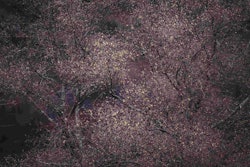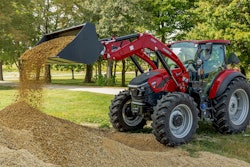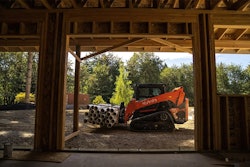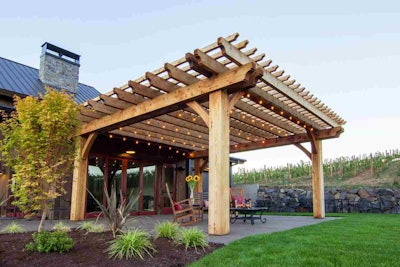 Pergolas constructed of redwood can last longer than decks because there is less surface for leaves and water to collect.
Pergolas constructed of redwood can last longer than decks because there is less surface for leaves and water to collect.Photo: Humboldt Redwood Company
It’s easy to get stuck in a rut and only think about using a material like redwood for decks or fences, but there are many more uses for this sustainable lumber.
Redwood has multiple benefits, from its strength and durability to its rich, warm colors. You may want to suggest to clients that they should consider using this dependable wood in other outdoor applications.
In recent years, there has been a shift toward using redwood more for pergolas, gazebos and similar shade structures.
“It was all about the deck,” says Jessica Hewitt, director of marketing at Humboldt Redwood Company. “What we’re seeing now is, that people are planning to build an outdoor shade structure or pergola. Once you have a deck you want to be comfortable outside so they want some shade now.”
As a decking material, redwood can last 20 to 30 years, but Hewitt estimates a sealed, standing redwood pergola can endure 40 years, especially if it is power washed from time to time.
“We always recommend sealing all the sides,” Hewitt says. “Best practice is to seal the material before putting it together.”
Even when redwood isn’t sealed it still can last for decades. It will develop a driftwood grey patina, if a UV protectant is not added, but it is easy to bring back the original color.
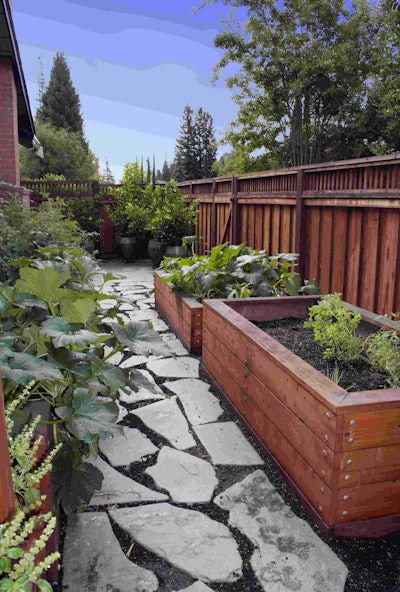 Raised planter beds constructed with redwood gives customers peace of mind knowing it is naturally free of harmful chemicals.
Raised planter beds constructed with redwood gives customers peace of mind knowing it is naturally free of harmful chemicals.Photo: Humboldt Redwood Company
Unlike the less expensive option of Douglas fir lumber, redwood has a natural deterrent against bugs and decay. Cedar is another naturally resistant wood, but it is imported from Canada and is currently facing some availability challenges that are affecting the price point.
Redwood has a regional appeal out West due to the abundance of the material.
“It’s indicative of the West and it’s timely to the place,” Hewitt says. “People also like the beautiful red color and you can always bring it back to that beautiful red color.”
Another purpose redwood has recently been used for is constructing raised planter beds.
“It’s natural opposed to plastics,” Hewitt says. “People use it a lot for planter boxes because there are no chemicals in the wood. They can grow herbs or veggies without worrying.”
For customers who are focused on making environmentally sound decisions, redwood has become the poster child of sustainable forestry. California redwood is harvested from forests that are certified by one of the two sustainable forestry programs, the Forest Stewardship Council and the Sustainable Forestry Initiative.
These programs require companies that own commercial forests to conduct sustainable forestry practices. Humbolt Redwood says it replants seven seedlings for every tree it harvests.
Redwood is lightweight, cuts easily and has minimal warping. It has also been deemed fire-safe under California’s strict codes.
In short, it’s a material landscape clients far from California might want to consider.



